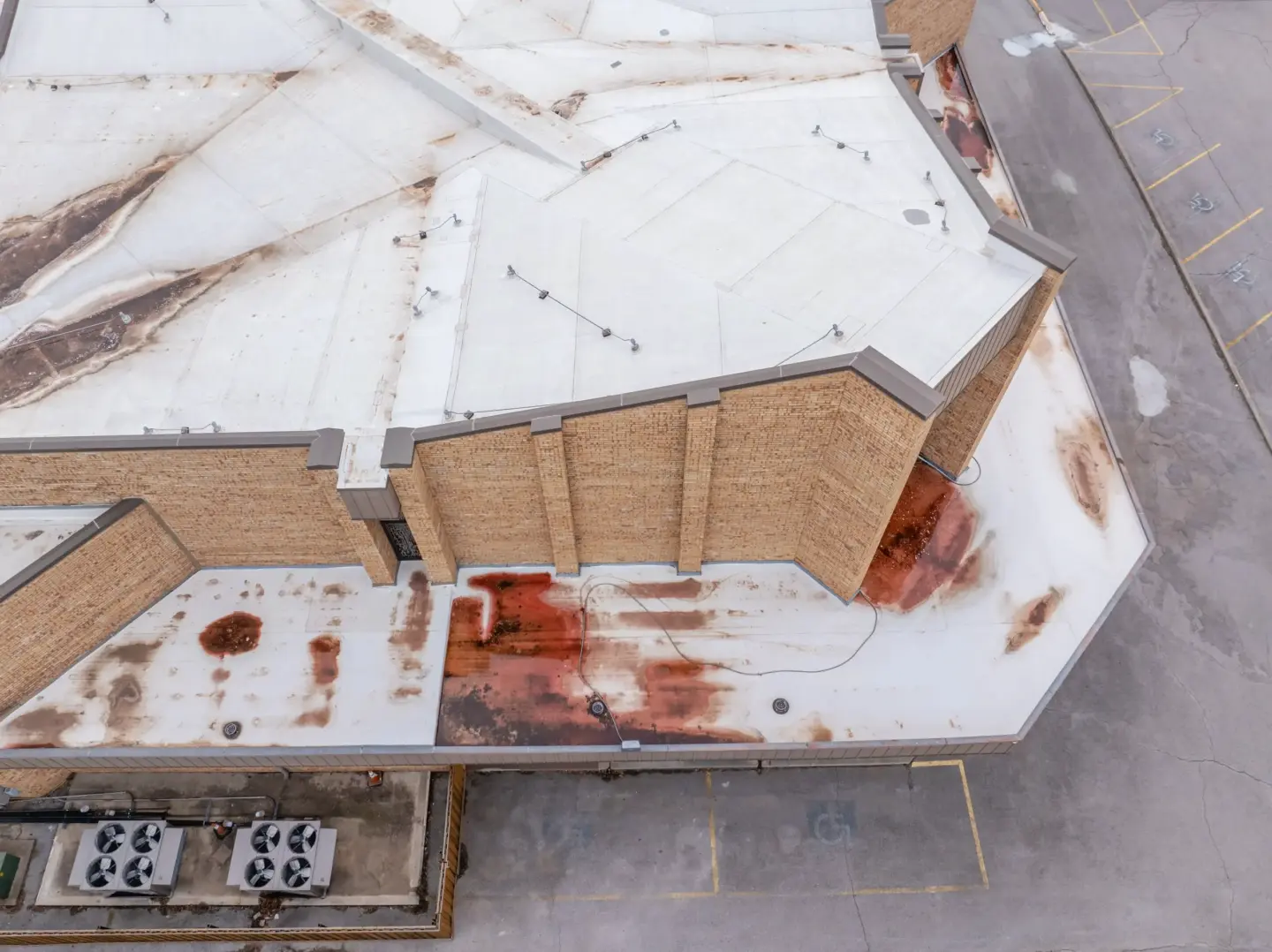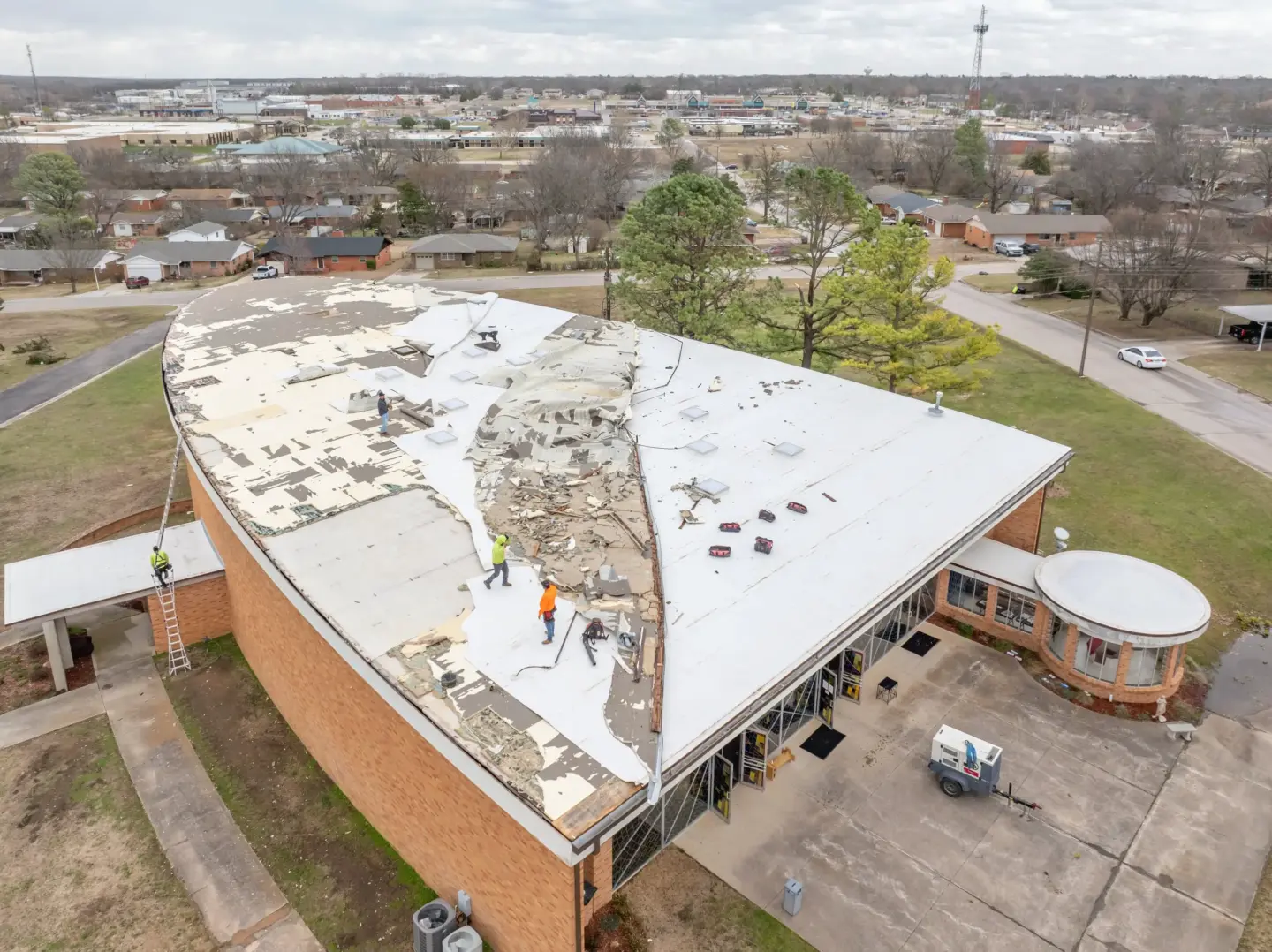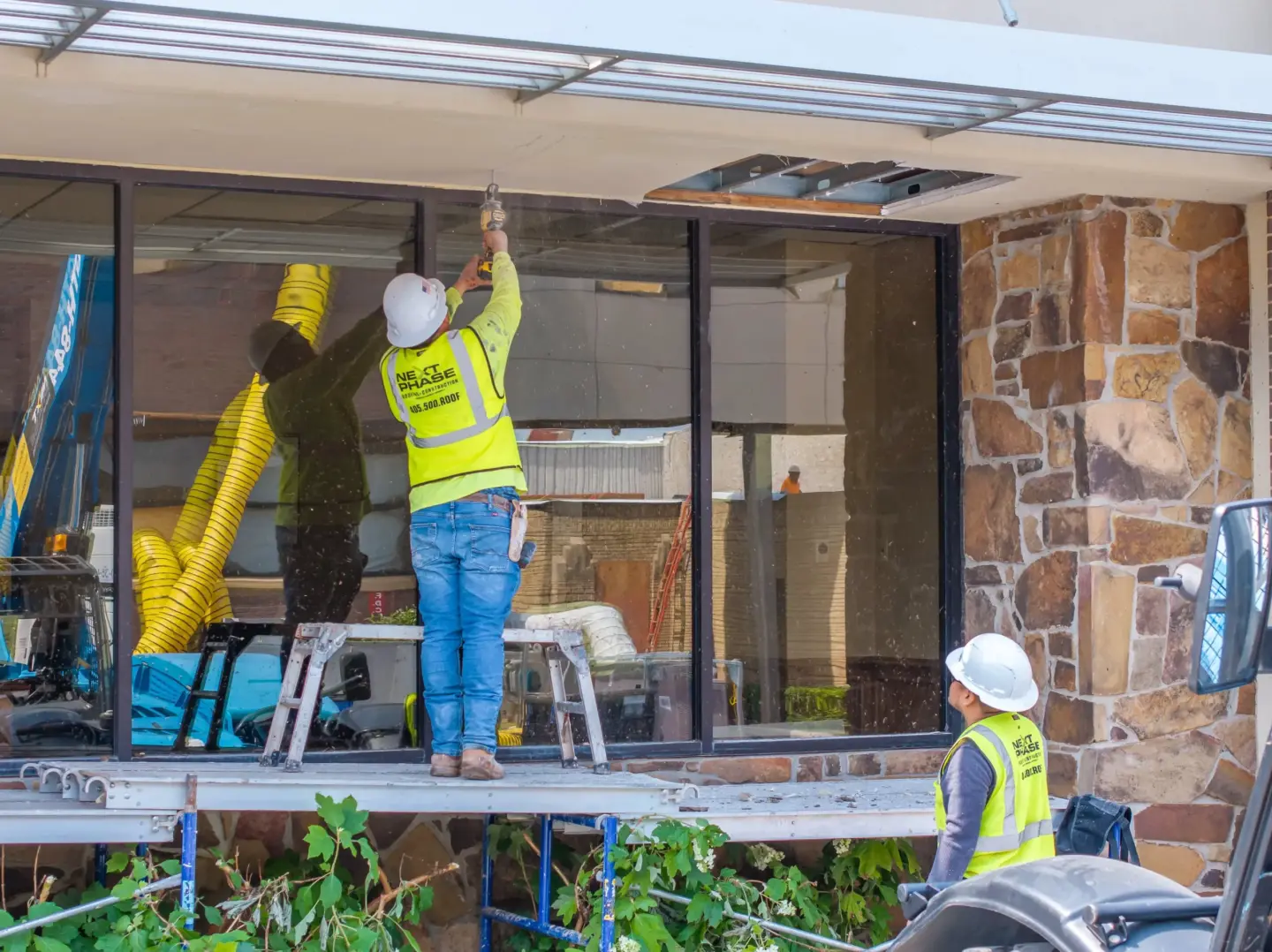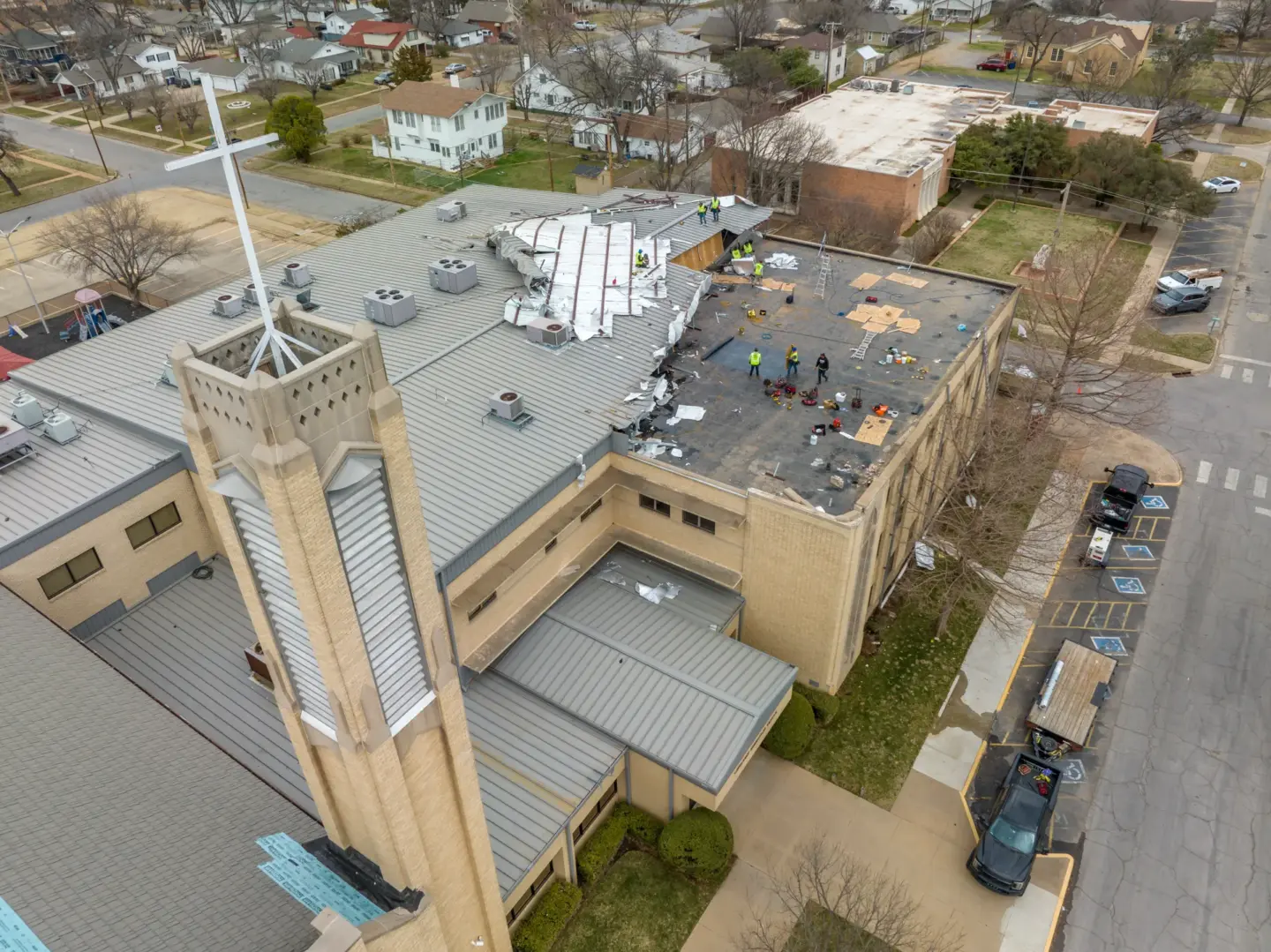If you manage a commercial building, church, school, or industrial facility, your roof is one of your most important assets. It protects your structure, operations, and everyone inside from the elements. But like any part of a building, a roof has a limited lifespan—and knowing when it’s time to replace your roof can save you thousands in repairs, prevent business disruptions, and keep your facility safe and compliant.
Roof replacement is a major investment, which makes choosing the right contractor just as important as recognizing the signs that it’s time to act. At Next Phase Roofing, we’ve helped hundreds of commercial property owners navigate this process with confidence. In this post, we’ll walk through five key signs that it may be time for a roof replacement—and what to do next.
1. Your Roof Is Aging
Age is one of the most common and clearest indicators that your roof may need to be replaced. Every roofing system has a projected service life—TPO membranes typically last 15–25 years, while metal roofing systems may last 30–50 years depending on the conditions and installation quality.
If you’re not the original building owner, or if your roof has been layered over older systems, it’s important to review the installation history or request an inspection. An aging roof may look fine from a distance but could be hiding issues like membrane shrinkage, cracking, or deteriorated insulation underneath. Even if there are no active leaks, replacement is often the smarter move when a system has reached the end of its life cycle to prevent emergency repairs or interior damage.

2. Your Roof Is Pooling Water
Water that doesn’t drain properly can become one of your roof’s worst enemies. Flat and low-slope roofs are especially prone to ponding water, which often signals poor drainage, sagging sections, or underlying rot in the substrate.
Pooling water accelerates the breakdown of roofing membranes, increases the risk of leaks, and puts unnecessary structural stress on your building. Over time, even small low spots can turn into major problem areas. If water remains in puddles more than 48 hours after a rainstorm, it’s time to have the system professionally inspected. A replacement may be needed to address compromised insulation, improve slope, or install an upgraded drainage solution.

3. Visible Storm Damage
Hail, high winds, and severe storms can wreak havoc on any roofing system. For commercial buildings, the damage might not be obvious right away—especially if you can’t see the roof surface from the ground. Look out for dents in metal panels, punctures in membrane systems, lifted seams, or missing components like flashing and coping.
Even minor storm damage can open the door to moisture intrusion, which spreads quickly behind the scenes. That’s why it’s crucial to get a professional storm damage inspection—even if you’re not sure how severe the damage is. If the system has been significantly compromised, a full roof replacement may be the most cost-effective solution.

4. Extensive Leaking Inside the Building
A small leak might be manageable with a localized repair. But when multiple areas are leaking or when interior damage becomes widespread, the issue is likely systemic. Persistent leaks can damage ceilings, walls, insulation, electrical systems, and flooring. They also promote mold growth and can disrupt daily operations.
In large commercial buildings, water doesn’t always show up directly beneath the source of the problem. A professional inspection will trace the issue back to its origin and help you determine whether repairs are viable—or whether the roof has deteriorated to the point of needing full replacement. Leaking is more than a maintenance issue—it’s a risk to your entire facility.

5. Wind Damage
High winds can lift seams, peel back flashing, or completely remove sections of roofing—especially on aging or poorly installed systems. On metal roofs, uplifted panels can compromise waterproofing and allow wind-driven rain to penetrate the building envelope. On flat roofs, membrane tears and displaced ballast or coatings are common after a major storm event.
If you notice debris on the ground, missing fascia or trim, or exposed areas on the roof, it’s time to schedule an inspection. Wind damage often qualifies for insurance coverage, but the longer you wait, the harder it is to get ahead of secondary damage. If the damage is extensive or the roof was already nearing the end of its lifespan, replacement is often the best path forward.

Key Takeaways
A commercial roof replacement isn’t something you should put off—especially when the warning signs are clear. Aging materials, storm and wind damage, chronic leaks, and structural issues like ponding water all point to the need for a proactive solution. Replacing your roof at the right time can reduce operational downtime, lower long-term maintenance costs, and improve energy efficiency.
At Next Phase Roofing, we specialize in helping building owners and facility managers make smart, stress-free decisions about their roofing systems. From inspections and insurance support to complete turn-key roof replacement, we’ve got you covered. Schedule a free inspection today and let’s find the best solution for your roof. Contact us here or call 405-500-7663.
Ready for your Next Phase?
Our commercial roofing experts turn insight into action. Schedule a consult and secure a storm-ready solution for your facility before the next front rolls through.